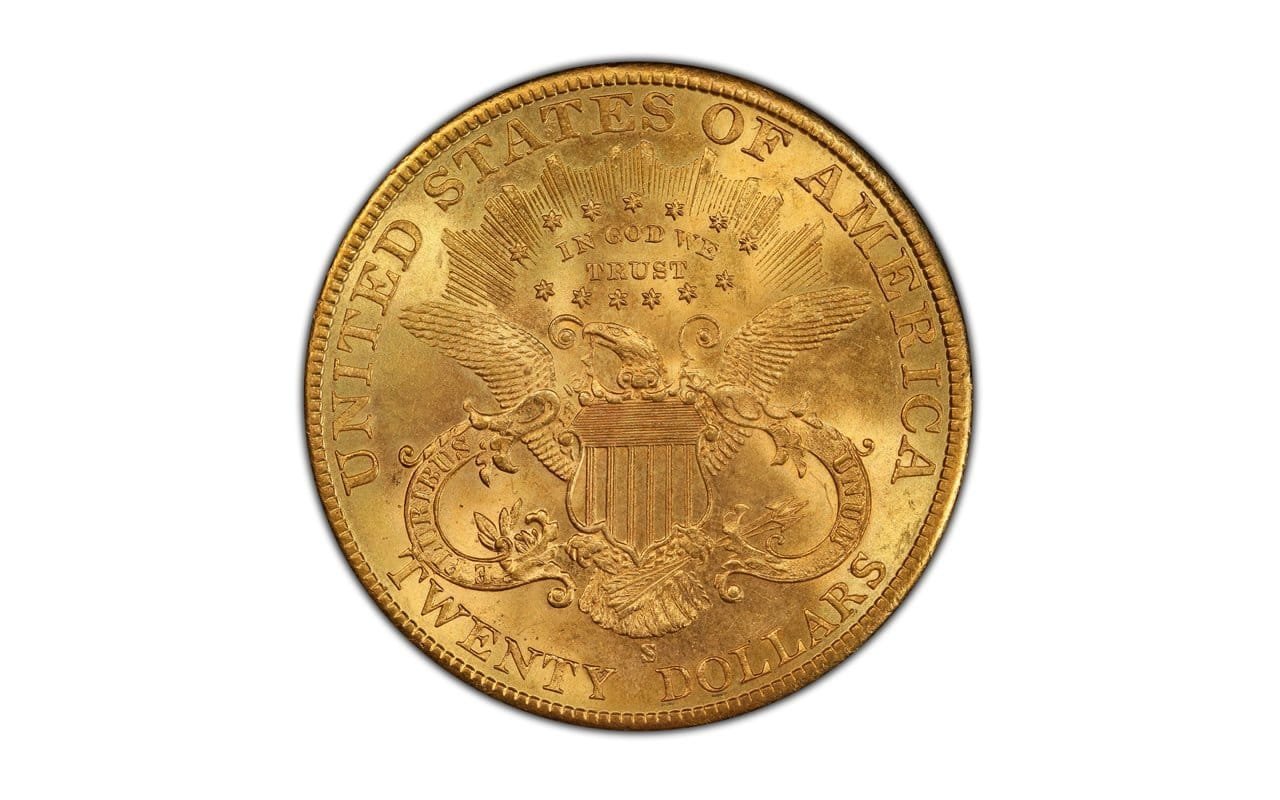The Republicans need to show that the Democrats, not businessmen, are responsible for rising prices and that what is needed to end rising prices is not price controls but the gold standard.
They need to show that the rise in prices has come about because of a massive increase in the supply of paper dollars (including checkbook dollars) created by the government in order to have the money to pay for the Green New Deal and other such projects. They should also show that if we express prices in either of the monies recognized by the US Constitution, namely, gold and silver, prices have fallen at the very time ignorant Democrats were complaining about the rise in prices and the alleged need for price controls, and have done so dramatically, and thus that the problem of rising prices is a problem only in the paper money.
I need to explain this further. Until 1933, the main unit of money in the US was a $20 gold coin called the “double eagle.” (A picture of one appears above.) This coin contained an ounce of gold. Thus, the dollar (one dollar) was implicitly defined as one-twentieth of an ounce of gold.
Today, a gold dollar buys whatever its price in paper dollars can buy. When the price of a one-ounce gold coin is $2,000 paper dollars, the price of a single gold dollar is implicitly one-twentieth of $2,000, or $100. Over the last few months, the price of gold has risen from about $2,000 per ounce to $2,600 per ounce, which implies that the price of one gold dollar is now $130 paper dollars.
The rise in the price of gold has exceeded the rise in the price of most other things, which implies that from the perspective of a gold dollar, the price of almost everything has fallen. This can be shown in terms of the following example. Imagine that when gold was $2,000 an ounce and the implicit price of a gold dollar was thus $100, the price of a cart full of groceries was $50 and the price of the amount of gasoline required to fill the average automobile’s gas tank was also $50.
Now imagine that when the price of a gold dollar rises to $130, the price of the cart of groceries and the tank of gas both rise ten percent to $55 each. A gold dollar is now sufficient not only to buy both of them, as before, but also to leave the gold equivalent of twenty paper dollars as change. Thus, their price in terms of the gold dollar has fallen, from 1 gold dollar to 110/130 of a gold dollar, i.e., to approximately 85 gold cents.
Over the years, the rise in the price of gold, and, of course, implicitly the rise in the price of a single gold dollar, has been so great that the price of a paper dollar has fallen from one gold dollar in 1933 to substantially below one gold cent today. This last follows from the fact that if the paper dollar price of a gold dollar is $100, the gold dollar price of a paper dollar is 1/100 of the gold dollar, or one gold cent. At a gold price of $2,600, which is the approximate price of gold currently, the paper dollar price of a gold dollar is $130. Thus, the gold dollar price of a paper dollar is 1/130, or .77 of a gold cent.
Paper money that is not backed by precious metal is almost always in a state of fall. Events with the potential to reduce the quantity of paper money and thus restore its value somewhat, are met with floods of still more paper money, which guarantees its continued fall in value.
To understand capitalism and how to defend it, be sure to download and read Reisman’s Capitalism: A Treatise on Economics available here. The book is downloadable without charge and can be printed out in easily portable small portions if one wishes.










